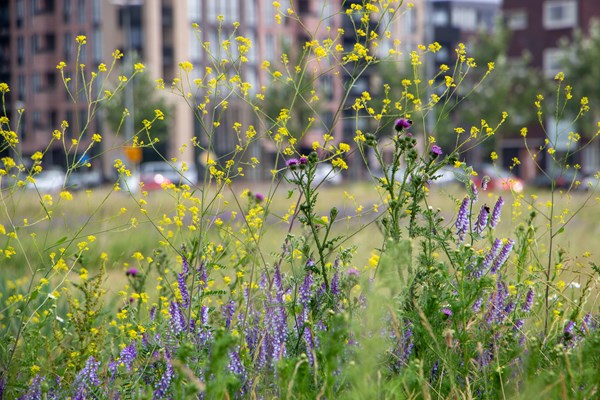2023 – a big year for biodiversity

SRUC's Thriving Natural Capital Challenge Centre is invested in making 2023 a big year for biodiversity in Scotland
When the 15th meeting of the United Nations’ Conference of the Parties to the Convention on Biological Diversity (COP15) concluded just before Christmas, it secured a historic new ‘deal for nature’.
More than half of global GDP is moderately or highly dependent on nature, according to the World Economic Forum. At COP15, 195 nations agreed that our world must not only become net zero, but also nature-positive, for the benefit of both people and the planet.
The Glasgow Financial Alliance for Net Zero (GFANZ), committed over US$130 trillion of private capital to transforming the economy for net zero, but the wide-ranging nature of the COP15 framework shows that nature and biodiversity is everybody’s business too.
There is now global commitment to halt and reverse biodiversity loss and to protect 30 per cent of land and oceans, all by 2030. There was also commitment to reduce all pollution to levels not harmful to wildlife and ecosystems, taking in significant cuts to nutrients, pesticides and plastic waste. The world has woken up in 2023 to the fact that there is no net zero pathway to limit global warming to 1.5°C to halt devastating effects of climate change, without addressing nature loss and land degradation.
SRUC’s Thriving Natural Capital Challenge Centre has been awarded a Natural Environment Research Council grant to focus on network building for nature positive projects - between Scottish biodiversity uplift programmes happening on the ground, and the investment and private finance sector.
It’s important that the private investment sector concentrates financial flows on biodiversity projects, but first, they need to understand them. Biodiversity and ecosystem services are the basis of new business opportunities. This is most obvious in the case of organisations selling goods and services that are directly associated with biodiversity and ecosystems. I am also about to start a project with RSPB Scotland at its new Glencripesdale reserve in the Morvern peninsula to explore how digital data about biodiversity uplift can be presented to investors to assure them of progress and impact in nature-based projects in which they have invested.
Along with SAC Consulting, Dr Al McVittie, an environmental economist at SRUC, and I have also just started research for the Scottish Government on Approaches to Measuring Biodiversity in Scotland.
Kate Dowen, Head of Sustainable Nature Finance in the Scottish Government's Environment and Forestry Directorate, said: “It’s important to be able to measure biodiversity so we can better protect and restore it. But this research will be important in a number of policy areas as well as conservation. What happens in planning, agriculture and natural capital or green finance all have a part in ensuring that Scotland protects 30 per cent of its land and seas by 2030.”
This is going to be a big year for biodiversity. The Thriving Natural Capital Challenge Centre is excited to have generated income of over £300,000 for the projects mentioned here, and I look forward to creating impact through nature positive action research. This work will be a really essential part of the natural economy’s pathway to net zero, as well as helping with the sector’s influence in the climate emergency and biodiversity crisis.
Dr Hannah Rudman
Co-Director, SRUC Thriving Natural Capital Challenge Centre
Posted by Hannah Rudman on 26/01/2023
